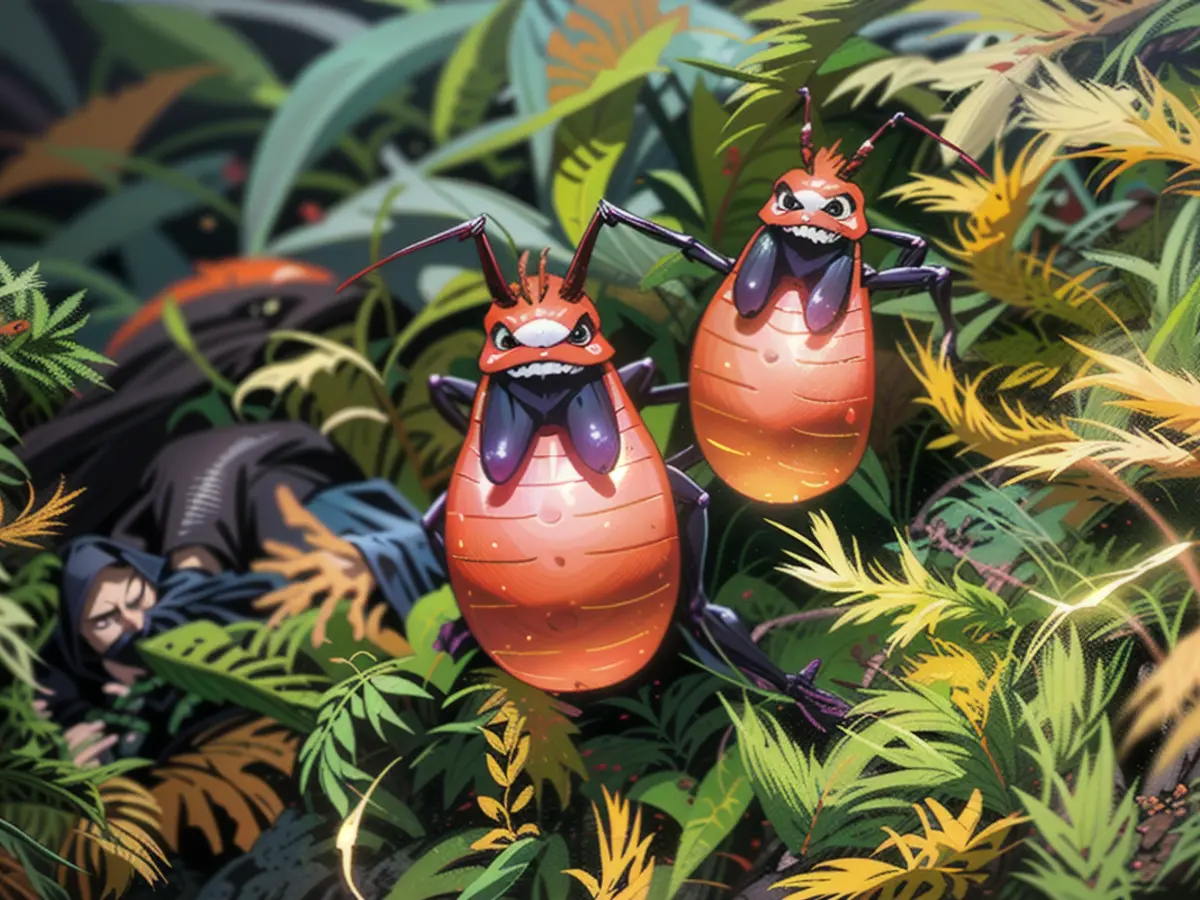Natural wonders and phenomena. - Focus on Fire Bug During "Insect Summer": Hands-On Campaign
The firebug ant, recognizable by its red-black pattern, safeguards gardens from pests. This year, the Nature Conservation Union of Germany (Nabu) and the Bavarian Nature Conservation Association LBV are looking to determine the numbers of these and other insects present in gardens, forests, and meadows. In order to do this, they're inviting nature enthusiasts to track insects in their surroundings from May 31 to June 9. The spotlight for this occasion is on the firebug ant.
Nabu and LBV's participatory project, dubbed "Insect Summer," aims to educate individuals on the significance and potential threats posed by insects. Nabu's managing director, Leif Miller,remarks, "It's crucial to comprehend insects' roles within our ecosystems." This venture also aims to provide insight into the progression of creatures like beetles, bumblebees, bees, and butterflies. Miller expresses that the undertaking is not about precise population statistics, but rather trend analysis. For instance, in 2021, an unexpected influx of wasps was observed, while butterfly populations significantly dropped.
More than 30,000 distinct insect species inhabit Germany, reiterates LBV. Experts, including Tarja Richter, have stated that their numbers have been declining dramatically. The use of pesticides and the loss of habitats are identified as contributing factors. For the environment, these six-legged creatures are essential: plants rely on them for pollination, while birds, reptiles, amphibians, and small mammals consider them a significant food source.
Participants who wish to be involved should select a serene and sunny day within the stipulated duration. For an hour, they must count the insects within a ten-meter range. Observations can be reported either online or through an app.
The second period of counting falls between August 2 and 11. LBV provides these two counting periods, as certain insects are easier to spot early in the summer, while others thrive more during peak summer conditions.
Read also:
- This will change in December
- Dikes withstand water masses so far - Scholz holds out the prospect of help
- Fireworks and parties ring in 2024 - turn of the year overshadowed by conflicts
- Attacks on ships in the Red Sea: shipping companies avoid important trade route
- Nabu and LBV urge everyone, particularly those in Berlin, to focus on the significance of insects in nature conservation during the "Insect Summer" campaign.
- Participants are encouraged to focus on spotting the firebug ant, along with beetles, bumblebees, bees, and butterflies, within their surroundings.
- The Firebug Ant, recognized by its red-black pattern, plays an essential role as a natural pest control in gardens, but its population numbers are decreasing due to pesticides and habitat loss.
- The Bavarian Nature Conservation Association LBV emphasizes the importance of focusing on insects, as there are over 30,000 distinct insect species in Germany that are essential to the environment.
- Nabu's managing director, Leif Miller, encourages the public to focus on comprehending insects' roles within our ecosystems by participating in the "Insect Summer" campaign.
- During the "Insect Summer" campaign, participants must focus on counting insects within a 10-meter range for an hour on a sunny day, either online or through an app.
- The Nature Conservation Union of Germany (Nabu) and the Bavarian Nature Conservation Association LBV aim to focus on trend analysis rather than precise population statistics to gain insights into insect populations' changes in Germany.
- Experts like Tarja Richter urge the public to focus on the importance of insects in nature conservation, as their numbers have been drastically declining due to human activities.
- Nabu and LBV's "Insect Summer" campaign invites nature enthusiasts in Bavaria, including Hilpoltstein, to focus on the role of insects in nature conservation and in Germany's ecosystems.
Source:







